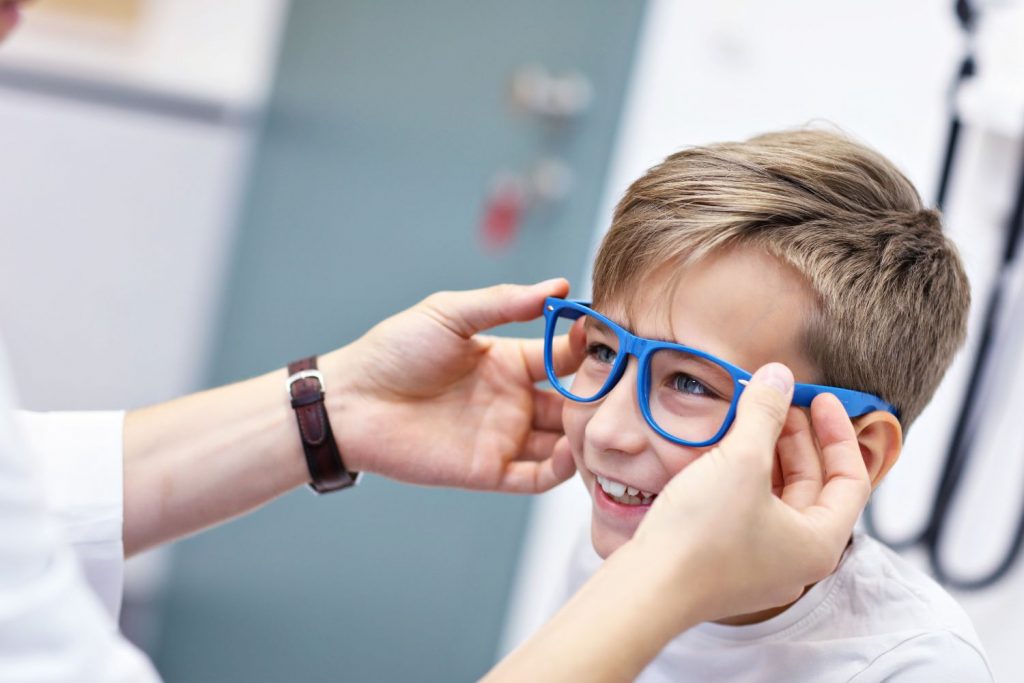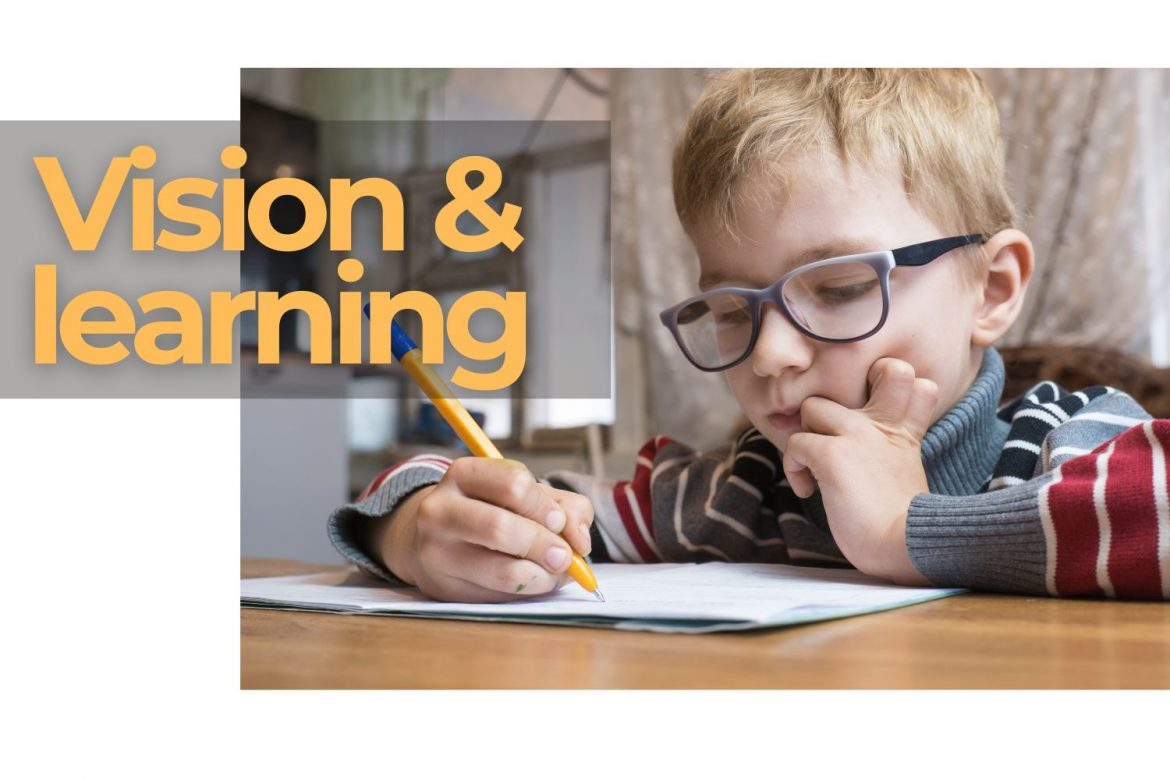![]()
Eyesight allows us to perceive information, process it, and make sense of our surroundings. Consequently, any impairment in vision can significantly affect an individual’s ability to learn and acquire knowledge.
Considering this, it’s important to understand the many ways that vision issues can impact learning, the developmental stages affected, the consequences on academic performance, and potential interventions to mitigate these challenges.
Prevalence of vision issues
Vision problems affect a substantial portion of the population. According to the World Health Organization (WHO), it is estimated that approximately 2.2 billion people worldwide live with some form of vision impairment. These impairments can range from mild to severe and may include conditions such as myopia (nearsightedness), hyperopia (farsightedness), astigmatism, color blindness, and more.
Children, in particular, are especially susceptible to vision problems. The American Optometric Association reports that approximately 25% of school-age children have some form of vision problem that can affect their learning. Many of these issues can go undetected or unaddressed, leading to academic challenges that can persist into adulthood.
Developmental stages affected by vision issues

Vision issues often impact individuals at various developmental stages, from infancy to adulthood, with unique consequences for each specific age group.
Early childhood
Vision is critical during early childhood when fundamental learning processes are taking place. Vision issues at this developmental stage can delay or hinder the development of essential skills, such as recognizing shapes, colors, and letters. This delay in visual development can have lasting effects on a child’s ability to read and write.
School-age children
During the school years, undiagnosed or untreated vision issues can affect a child’s academic performance. Children may struggle with reading, writing, and comprehending information presented in the classroom, in reading materials, and on electronic devices. This can lead to frustration, decreased self-esteem, and a disinterest in learning.
Adolescents and adults
Vision problems, when left untreated, often persist into adolescence and adulthood, further impacting the ability to learn. For example, individuals with uncorrected vision issues may struggle with reading textbooks or using computers for work or study.
Additionally, and since learning tends to build on previous knowledge and experience, vision-related delays and interruptions occurring in early childhood and school-age years tend to become more pronounced and more difficult to correct in adulthood.
Specific vision issues affecting learning

Refractive errors
Refractive errors are the most common vision issues affecting learning. These errors occur when the shape of the eye does not bend light correctly, leading to blurred vision. The most common types of refractive errors include myopia (nearsightedness), hyperopia (farsightedness), and astigmatism.
Myopia (nearsightedness)
Myopia is a condition where distant objects appear blurry while close objects can be seen clearly. Children with myopia may experience difficulty in reading the board in the classroom, which can result in strained vision and poor academic performance. Myopia often worsens over time and should be closely monitored and corrected.
Hyperopia (farsightedness)
Hyperopia causes close objects to appear blurry while distant objects are relatively clear. This vision issue can make it difficult for students to read, especially when working with printed material. As with myopia, hyperopia should be addressed with corrective lenses.
Astigmatism
Astigmatism occurs when the eye’s cornea or lens has an irregular shape, causing blurry or distorted vision. Students with astigmatism may struggle to see text clearly and may experience eye strain and headaches while reading.
Strategies for addressing refractive errors:
- Regular eye examinations
Encourage children and their parents to schedule regular eye exams to detect and correct refractive errors. - Corrective lenses
Prescribe glasses or contact lenses to address specific refractive errors. - Vision therapy
In some cases, vision therapy may be recommended to help strengthen eye muscles and improve focusing skills.
Convergence insufficiency
Convergence insufficiency is a vision disorder that affects a person’s ability to focus both eyes on a nearby object simultaneously. This condition often leads to double vision, eye strain, and difficulty reading, especially for an extended period. Children with convergence insufficiency may experience difficulty following lines of text on a page or maintaining their attention while reading.
Strategies for addressing convergence insufficiency:
- Vision therapy
Vision therapy exercises can help improve convergence and eye coordination. - Corrective lenses
Specialized glasses may be prescribed to aid convergence. - Reduced screen time
Encourage children to take breaks from screens to reduce eye strain.
Accommodative dysfunction
Accommodative dysfunction is a condition that affects a person’s ability to change focus from near to far and vice versa. As you can imagine, this is essential for tasks when participating in classroom learning. Those with accommodative dysfunction may experience eye strain, difficulty switching between near and far objects, and blurred vision when looking at distant objects.
Strategies for addressing accommodative dysfunction:
- Vision therapy
Vision therapy exercises can help improve accommodation skills. - Corrective lenses
Prescription glasses may be needed to assist with focusing. - Proper lighting
Adequate lighting can help reduce eye strain.
Visual perceptual disorders
Visual perceptual disorders are related to the brain’s ability to interpret visual information correctly. These issues are less related to the eye’s physical structure and more to the brain’s processing of visual data. Visual perceptual disorders can impact reading comprehension, spatial awareness, and handwriting.
Visual processing disorder
Visual processing disorder (VPD) affects the brain’s ability to interpret visual information correctly. Children with VPD may have difficulty with tasks like recognizing letters or shapes, following a line of text, and reading comprehension. These difficulties can make reading and learning challenging.
Strategies for addressing visual processing disorder:
- Vision therapy
Vision therapy can help improve visual processing skills. - Multisensory teaching method
Using various sensory modalities can help children with VPD better grasp and retain information. - Individualized learning strategies
Tailor teaching methods to address the specific needs of the child.
Visual-motor integration disorder
Visual-motor integration disorder (VMI) affects the coordination between visual perception and motor skills. This can impact tasks such as handwriting, drawing, and even solving math problems that involve spatial understanding.
Strategies for addressing visual-motor integration disorder:
- Occupational therapy
Occupational therapists can work with children to improve their fine motor skills. - Specialized writing tools
Using adaptive tools such as grips and slant boards can assist with handwriting. - Visual cues
Incorporate visual cues to help children better understand spatial relationships.
Visual stress and Irlen Syndrome
Visual stress, often associated with Irlen Syndrome, is a condition where certain patterns, colors, or lighting conditions can cause discomfort and visual distortions. Children with visual stress may experience difficulty reading black text on white paper, as the contrast can be problematic.
Strategies for addressing visual stress:
- Colored overlays and lenses
Using colored overlays or lenses can help reduce the symptoms of visual stress. - Proper lighting
Ensuring the classroom has appropriate lighting conditions can help minimize visual discomfort. - Font and background choices
Experiment with fonts and background colors to find combinations that reduce visual stress.
Dyslexia
Dyslexia is a neurodevelopmental disorder that affects a person’s ability to read, write, and spell. People with dyslexia often have difficulty with accurate and/or fluent word recognition and struggle with poor spelling and decoding abilities. These issues can lead to problems with reading comprehension and slow the overall learning process. Dyslexia is not related to intelligence and people with dyslexia often have average to above-average intelligence.
The exact cause of dyslexia is not known, but it is believed to involve both genetic and environmental factors. With appropriate support, such as specialized reading programs and accommodations, individuals with dyslexia can develop effective strategies to improve their reading and writing skills, allowing them to succeed academically and in their careers.
Strategies for addressing dyslexia:
- Early identification
Diagnose dyslexia as early as possible to provide timely intervention and support. - Structured literacy instruction
Provide systematic and explicit instruction in phonics, phonemic awareness, and decoding skills. - Sensory breaks
Incorporate short breaks into the day to help children manage sensory overload and fatigue. - Speech and language therapy
Offer speech therapy to address articulation and language processing difficulties that may accompany dyslexia.
Strabismus and amblyopia
Strabismus, or crossed eyes, is a condition where the eyes do not align properly, causing one eye to turn in a different direction. Amblyopia, or “lazy eye,” can result from untreated strabismus. Both conditions can impact a child’s ability to perceive depth and coordinate visual information, making tasks like reading and learning more challenging.
Strategies for addressing strabismus and amblyopia:
- Vision therapy
Vision therapy can help improve eye alignment and coordination. - Patching therapy
Covering the stronger eye with a patch to strengthen the weaker one can help treat amblyopia. - Eye surgery
In some cases, eye surgery may be necessary to correct strabismus.
The consequences of vision issues on academic performance

The impact of vision issues on the ability to learn is profound and multifaceted. It affects various aspects of learning, which can lead to long-term consequences for an individual’s educational journey and future prospects.
Reading and comprehension
One of the most significant challenges individuals with vision issues face is reading. Reading involves intricate visual processes, from tracking words on a page to interpreting symbols and letters. Vision problems, such as uncorrected myopia or astigmatism, can make reading difficult and uncomfortable, leading to slower reading rates and reduced comprehension.
Writing and note-taking
Vision issues can also affect a student’s ability to take notes during class and write while completing assignments. Illegible handwriting or difficulty in copying information can hinder the learning process, making it harder to study and retain information.
Participation and engagement
Children with vision issues are often less likely to participate in classroom discussions or interactive activities. This reduced engagement can affect a child’s overall educational experience and deprive them of valuable opportunities for peer interaction and skill development.
Self-esteem and confidence
Vision problems can also impact a child’s self-esteem and confidence. Struggling with academic tasks due to vision issues can lead to feelings of inadequacy and frustration, potentially deterring them from pursuing their full educational potential.
Interventions and solutions
While vision issues can pose significant challenges to learning, various interventions and solutions can help mitigate their impact. These interventions fall into several categories and include:
Vision screening
Regular vision screenings in schools and healthcare settings can help identify vision issues early in children. Early detection allows for timely interventions, such as prescription glasses or contact lenses, to correct refractive errors.
Assistive technology
Assistive technology tools and software can support students with vision issues in their learning endeavors. Screen readers, text-to-speech software, and magnification tools enable individuals to access and engage with educational materials more effectively.
Vision therapy
Vision therapy, conducted under the guidance of a trained optometrist, can help individuals improve their visual skills and alleviate certain vision-related learning difficulties. It is particularly useful for conditions like convergence insufficiency or tracking problems.

Accessibility measures
Schools and workplaces can implement accessibility measures, such as providing accessible digital content, using high-contrast materials, and ensuring physical spaces are conducive to those with vision impairments.
Public awareness and education
Raising public awareness about the importance of regular eye examinations and addressing vision issues has been shown to be effective in helping to reduce the number of people who go undiagnosed and untreated. Education campaigns can also help destigmatize vision problems and encourage early intervention.
Healthy vision is more than just seeing the world around us
Vision issues have a profound and serious impact on an individual’s ability to learn and succeed in academic and professional settings. With the prevalence of vision problems in both children and adults, it is crucial to recognize the significance of early detection and intervention.
By addressing vision issues through regular screenings, implementing appropriate accommodations, and fostering a culture of awareness and inclusivity, individuals with vision impairments are better able to overcome their challenges and reach their full potential in the world of learning and beyond. Vision is not just about seeing; it’s about opening doors to knowledge, opportunities, and a brighter future.


